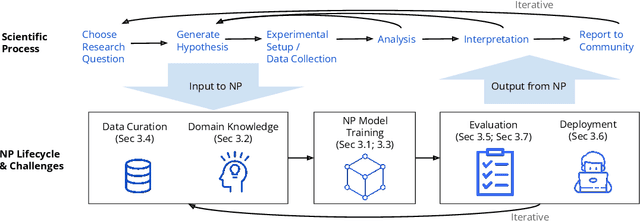Atharva Sehgal
Self-Evolving Visual Concept Library using Vision-Language Critics
Mar 31, 2025Abstract:We study the problem of building a visual concept library for visual recognition. Building effective visual concept libraries is challenging, as manual definition is labor-intensive, while relying solely on LLMs for concept generation can result in concepts that lack discriminative power or fail to account for the complex interactions between them. Our approach, ESCHER, takes a library learning perspective to iteratively discover and improve visual concepts. ESCHER uses a vision-language model (VLM) as a critic to iteratively refine the concept library, including accounting for interactions between concepts and how they affect downstream classifiers. By leveraging the in-context learning abilities of LLMs and the history of performance using various concepts, ESCHER dynamically improves its concept generation strategy based on the VLM critic's feedback. Finally, ESCHER does not require any human annotations, and is thus an automated plug-and-play framework. We empirically demonstrate the ability of ESCHER to learn a concept library for zero-shot, few-shot, and fine-tuning visual classification tasks. This work represents, to our knowledge, the first application of concept library learning to real-world visual tasks.
Symbolic Regression with a Learned Concept Library
Sep 14, 2024Abstract:We present a novel method for symbolic regression (SR), the task of searching for compact programmatic hypotheses that best explain a dataset. The problem is commonly solved using genetic algorithms; we show that we can enhance such methods by inducing a library of abstract textual concepts. Our algorithm, called LaSR, uses zero-shot queries to a large language model (LLM) to discover and evolve concepts occurring in known high-performing hypotheses. We discover new hypotheses using a mix of standard evolutionary steps and LLM-guided steps (obtained through zero-shot LLM queries) conditioned on discovered concepts. Once discovered, hypotheses are used in a new round of concept abstraction and evolution. We validate LaSR on the Feynman equations, a popular SR benchmark, as well as a set of synthetic tasks. On these benchmarks, LaSR substantially outperforms a variety of state-of-the-art SR approaches based on deep learning and evolutionary algorithms. Moreover, we show that LaSR can be used to discover a novel and powerful scaling law for LLMs.
Neurosymbolic Grounding for Compositional World Models
Oct 19, 2023



Abstract:We introduce Cosmos, a framework for object-centric world modeling that is designed for compositional generalization (CG), i.e., high performance on unseen input scenes obtained through the composition of known visual "atoms." The central insight behind Cosmos is the use of a novel form of neurosymbolic grounding. Specifically, the framework introduces two new tools: (i) neurosymbolic scene encodings, which represent each entity in a scene using a real vector computed using a neural encoder, as well as a vector of composable symbols describing attributes of the entity, and (ii) a neurosymbolic attention mechanism that binds these entities to learned rules of interaction. Cosmos is end-to-end differentiable; also, unlike traditional neurosymbolic methods that require representations to be manually mapped to symbols, it computes an entity's symbolic attributes using vision-language foundation models. Through an evaluation that considers two different forms of CG on an established blocks-pushing domain, we show that the framework establishes a new state-of-the-art for CG in world modeling.
Neurosymbolic Programming for Science
Oct 10, 2022


Abstract:Neurosymbolic Programming (NP) techniques have the potential to accelerate scientific discovery across fields. These models combine neural and symbolic components to learn complex patterns and representations from data, using high-level concepts or known constraints. As a result, NP techniques can interface with symbolic domain knowledge from scientists, such as prior knowledge and experimental context, to produce interpretable outputs. Here, we identify opportunities and challenges between current NP models and scientific workflows, with real-world examples from behavior analysis in science. We define concrete next steps to move the NP for science field forward, to enable its use broadly for workflows across the natural and social sciences.
 Add to Chrome
Add to Chrome Add to Firefox
Add to Firefox Add to Edge
Add to Edge